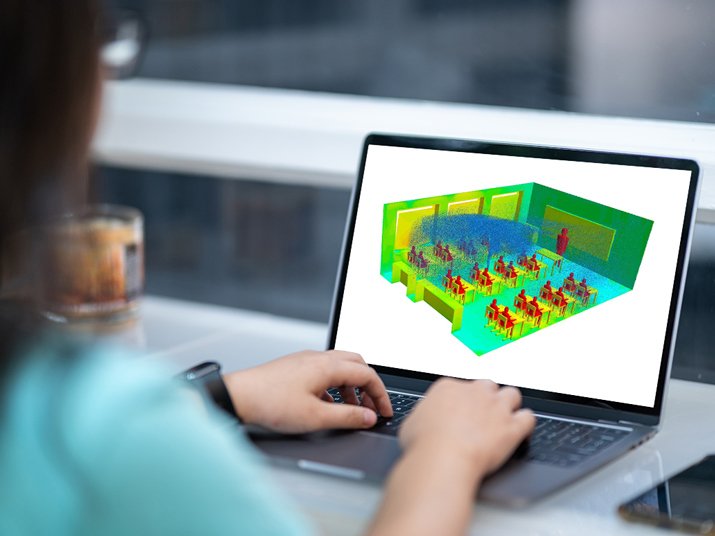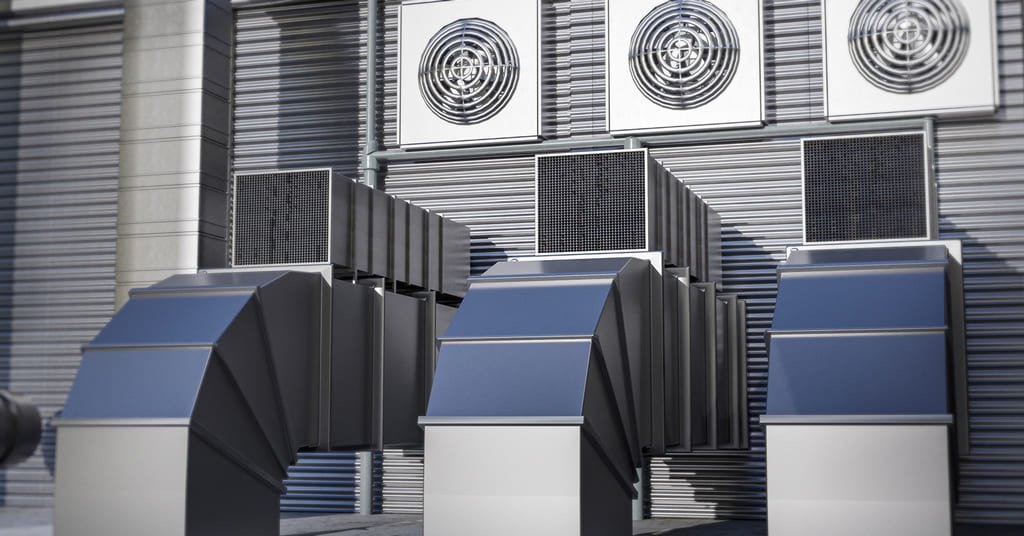Ventilation is one of the significant factors that determine the habitability, safety, as well as comfort of the inhabitants of a building. Ventilation can also be a determining factor for real estate value for some buyers.
In some cases, a ventilation strategy must be designed to suit the regulations and rules of the building by regional, local or national authoritative bodies.
An effective and mission-critical ventilation strategy can be of utmost importance in establishments such as commercial buildings, laboratories, hospitals, and industrial facilities.
Moreover, maintaining thermal comfort and ensuring an energy-efficient ventilation strategy is the need of the hour as climate changes and global resources are at a fluctuating war.
But, how does an engineer or a designer arrive at the perfect ventilation strategy that is optimized for energy efficiency and meets the requirements of the infrastructure at hand?
CFD simulations have increasingly been an asset for designers and engineers over the past few years in enhancing their design abilities, including perfecting their ventilation strategies.
This article briefly describes the various successful ventilation strategies for specific conditions and how CFD simulations can help validate and optimize them.
What is Ventilation, and Why is it Necessary?
In general, ventilation ensures adequate air exchange so that air quality is maintained within an enclosed environment. This is usually facilitated using an HVAC system.
These systems are required to provide inhabitants with air conditions that are both humane and tolerable. As mentioned earlier, they must also follow safety requirements that consider various criteria, depending on the purpose of each building or personal space.
Depending on their roles and functions, there are several ventilation strategies for active and passive cooling in buildings, and each can be validated specifically by CFD simulations for efficiency, performance, and evaluation.
Types of ventilation strategies
Here are some different ventilation plans and strategies that have been used by designers and engineers globally:
Natural Ventilation System
The best source of ventilation is a continuous supply of clean air drawn from natural sources. However, because modern homes are sealed to save energy, it’s a good idea to include a natural ventilation system to ensure a steady flow of oxygen.
This can be accomplished with windows that use the external air pressure generated by the structure and its surroundings. Electric controls are particularly beneficial in public buildings because they can include sophisticated technology detecting weather patterns and fire alarms and opening or closing as needed.
Mechanized Fans
Due to the form and location of the structure, natural ventilation is not always possible. As a result, mechanized devices to infuse fresh air and evacuate stale oxygen are required.
Mechanized fans are frequently installed in windows or air ducts. The fan extracts and regulates internal air, which may be adjusted to the appropriate environment.
For example, in humid situations, particle penetration must be decreased, whereas ex-filtration must be avoided during colder periods to avoid condensation.
Exhaust Ventilation
Exhaust ventilation systems depressurize the building and lower the inner air pressure to blow the outside air. The stale air is sucked out of the building via an exhaust mechanism and a ducting system on the exterior. Fresh air is introduced from a separate source, usually via another air vent.
They’re most often found in the bathroom, kitchen, or utility room to prevent a build-up of steam and humidity. Although larger rooms may require different systems, it is most beneficial to place them in localized locations near where steam builds up.
Supply Ventilation
Supply ventilation pressurizes the building and forces outside oxygen particles via a fan. The air will escape through the building’s crevices, doors, windows, or specially designed ducts and vents.
Their design enables a better air quality to enter the house, screening out dust and other pollutants. As a result, they are commonly seen in living rooms and bedrooms.
They can, however, produce excessive moisture in cooler temperatures if not fitted properly.
Balanced Ventilation
To mitigate the disadvantages of exhaust and supply ventilation, more balanced designs that do not pressurize or depressurize the building can be implemented.
Instead, they aim to inject and expel the same amount of air by strategically placing at least two fans and two duct systems in the most efficient areas of the space.
Smoke Ventilation
It is required by law in the case of public buildings to provide smoke ventilation in the event of a fire. This aids in eliminating thick, condensed smoke—the most lethal component of a fire—and provides a more straightforward escape route for trapped residents.
Testing Ventilation Strategies with CFD Simulation

It is critical to evaluate the design of HVAC equipment and the performance of ventilation systems to maintain sustainable living environments.
Designers must first understand airflow and indoor air quality, assess how external wind conditions may affect internal thermal and ventilation conditions, and verify their designs using an efficient tool like CFD simulations to create an effective ventilation and heating plan.
An effective ventilation plan validated by CFD has several benefits, such as:
-
Ensure good air quality and a pleasant environment for the room’s or building’s occupants.
-
Prevent room temps from becoming sub-optimal, if not deadly.
-
Avoid droughts.
-
Prevent diseases and bad hygiene.
-
Prevent health problems from hazardous gas inhalation.
-
Ensure that the HVAC system size selected is appropriate for the job.
-
Reduce the amount of energy required by avoiding excessive power consumption.
-
Prevent equipment or machinery from being damaged.
-
Reduce the risk of a fire by controlling its spread and enabling containment.
From ensuring ventilation in pharmaceutical facilities, and industries involving harmful gasses to isolation rooms for infectious diseases and adequate ventilation in schools, homes, and office buildings, accurate CFD simulations can greatly benefit designers and engineers to build sustainable and efficient ventilation systems that validate existing systems for optimization.
Mechartes Validation Solutions with CFD Simulation
Mechartes team of CFD simulation experts has worked on several projects to enhance their ventilation strategy. We have created 3D models using sophisticated technology to assess the various boundary conditions and fluid flow using CFD software to understand the ventilation systems and their components and validate their performance.
If you want to optimize your ventilation systems, contact us.


 Share
Share  facebook
facebook